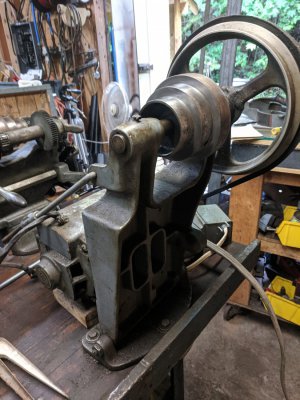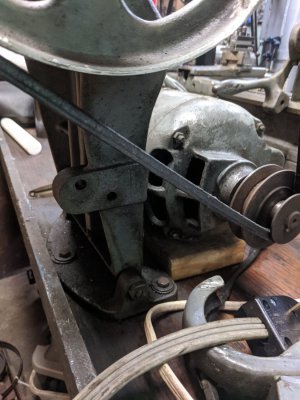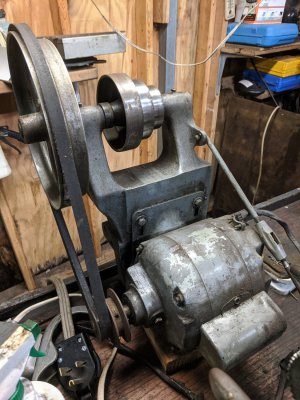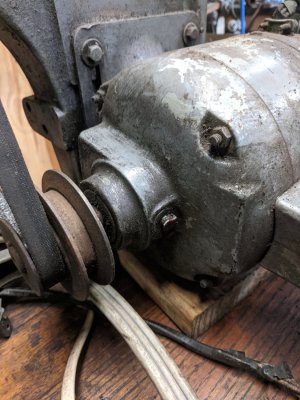- Joined
- Jul 11, 2017
- Messages
- 41
Now that I've decided to change my belt to a serpentine and ordered the felts kit for my SouthBend 9A, I thought I'd look into something that has bothered me about the set-up. In the picture of the motor you can see the oil holes that are mounted on the side in such a way that it makes it difficult or impossible to oil them regularly.
I have only seen one SB 9A which is the one I bought used and have not changed the set-up. So I'm hoping that some of you can enlighten me. The other pics show the front and back side of the horizontal drive as well as one on the side showing some holes whose purpose I wonder about. The motor's nameplate is mostly rubbed away but I think it says 1725RPM. Was this standard?
Thanks,
I have only seen one SB 9A which is the one I bought used and have not changed the set-up. So I'm hoping that some of you can enlighten me. The other pics show the front and back side of the horizontal drive as well as one on the side showing some holes whose purpose I wonder about. The motor's nameplate is mostly rubbed away but I think it says 1725RPM. Was this standard?
Thanks,





